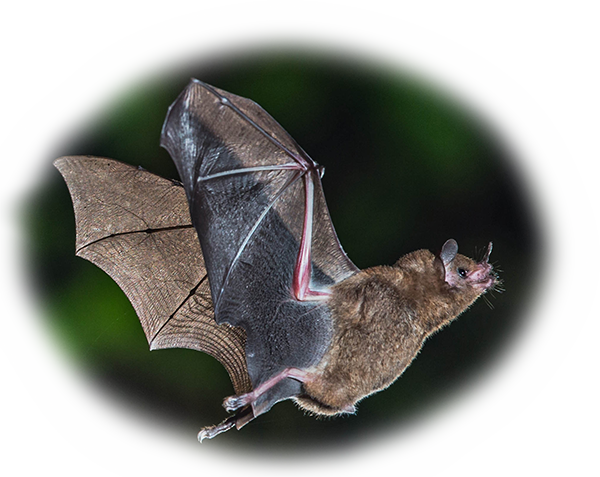18-Dec-2021
Bats in the AoNB
While the presence of several species of bat in the HS2 corridor between the North Portal and Rocky Lane was recorded in the Environmental Statement ( Vol 2, section 7 - see table 8) the presence of the (rare) Barbastelle bat was not. The verdict (7.4.19) was
"No significant effects are expected on the bat assemblage associated with mature hedges, trees and tree-lined lanes at the southern end of the area. The construction of the South Heath cutting, the Rocky Lane south cutting and the Small Dean viaduct southern approach embankment will remove mature hedges, trees and tree-lined lanes, particularly from Rocky Lane, Bowood Lane, King’s Lane and Leather Lane. These features are used by common and soprano pipistrelles, a Myotis species, noctules and serotines. The width of the land required for the construction of the Proposed Scheme (that ranges between 60m and 550m) is therefore likely to reduce the frequency with which this assemblage crosses the land required for the construction of the Proposed Scheme. However, no known roosts will be removed and extensive foraging sites (predominantly woodland) will be retained on either side of the route, as such loss of habitat is unlikely to result in an adverse effect on the assemblages' conservation status."
Fieldwork (by local residents and confirmed by professional ecologists) has now established the presence of Barbastelles in the area, which justifies the implementation of a proper mitigation strategy, particularly for Bowood and Leather lanes. This species is not covered in the route wide HS2 bat license, and so the legality of some works undertaken by the contractors is in doubt.

Reports
- Sam Watson, 17-Jun-21
- Confirms the importance of Leather Lane as a bat commuting corridor, and the presence of Barbastelles
- Sam Watson, 3-Dec-21
- Compares bat activity along the lane with the gap (in the tree line) created by felling, where the track will cross
- Bat Ecology and Mitigation
- Prof. John Altringham (A305 Westbury Bypass Inquiry - 2008);
The proposed mitigation measures are perhaps the best that can be sensibly employed given the current state of knowledge. However, that knowledge is very poor. Confidence in their success is based more on a desire for success than on objective appraisal of the available evidence. Monitoring plans are wholly inadequate. There is insufficient detail to assess their effectiveness. - Is bat foraging habitat legally protected ?
- Garland and Markham, 2007.
Although the Bat Mitigation Guidelines from 2004 advise that the foraging habitat and commuting routes of bats are not legally protected, we have suggested a reinterpretation of the legislation that predates these guidelines could challenge this statement. Certainly we contend that nature conservation legislation and planning policy subsequent to these guidelines, i.e. NERC and PPS9, while not providing explicit protection for important bat habitat, if properly applied can and should be used to provide a strong case for either the legal protection of such features or else for a sufficient level of mitigation and/or compensation